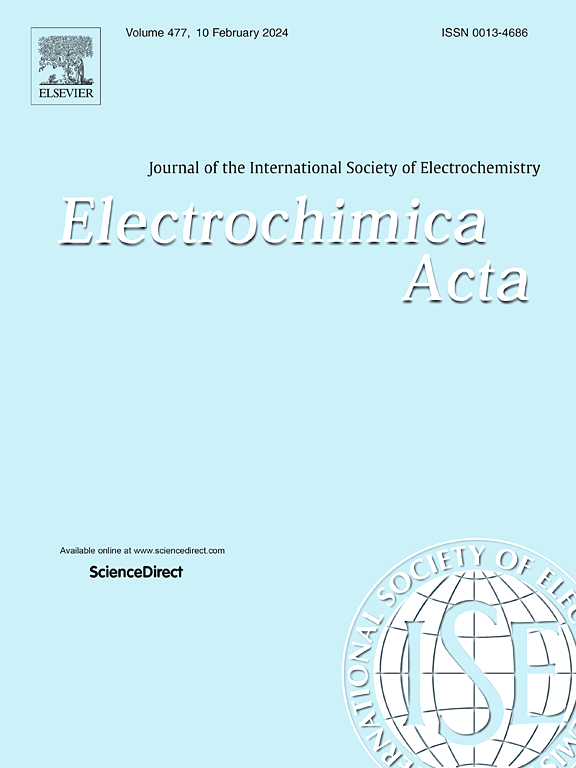4-硝基苯溴在离子凝胶膜上的电化学还原机理
IF 5.5
3区 材料科学
Q1 ELECTROCHEMISTRY
引用次数: 0
摘要
离子液体电解质由于其可忽略不计的蒸气压和高沸点,作为一种可持续的、绿色的电化学电解质受到了极大的关注。以离子液体为基础制造固体电解质是解决液体电解质泄漏风险的一个上升趋势。这些固体电解质通常被称为离子凝胶膜(IGs),它含有离子凝胶膜的固有特性,同时具有优异的机械强度。这些特性使它们成为研究反应机理和促进电合成过程的理想材料。通过提供稳定的导电环境,离子凝胶可以精确控制和监测固体电解质中的电化学反应,从而获得更准确和可重复的结果。它们的应用不仅增强了我们对基本电化学过程的理解,而且为电合成的创新进步铺平了道路,为新材料和新技术的发展做出了重大贡献。本研究首次研究并揭示了对硝基苯溴(p-NBBr)在IG膜中的还原机理。我们成功地在IG膜中进行了p-NBBr的控制电位电解,并研究了两种不同的电化学设置以获得最佳配置。我们还证明,在IG组合物中加入电解质添加剂,如锂二(三氟甲基磺酰)亚胺(Li TFSI),将所得膜的离子电导率从0.15提高到0.2 mS/cm。本文章由计算机程序翻译,如有差异,请以英文原文为准。


Electrochemical Reduction Mechanism of 4-Nitrobenzyl Bromide in Ionogel Membranes
Ionic liquid-based electrolytes (ILs) have gained tremendous attention as sustainable, green electrolytes for electrochemical processes due to their negligible vapour pressure and high boiling points. A rising trend is to fabricate solid electrolytes based on ionic liquids to address the risk of leakage associated to liquid electrolytes. These solid electrolytes, which are commonly known as ionogel membranes (IGs), contain the intrinsic properties of ILs, while having excellent mechanical strength. These characteristics make them ideal for investigating reaction mechanisms and facilitating electrosynthesis processes. By providing a stable and conductive environment, ionogels enable precise control and monitoring of electrochemical reactions in solid electrolytes, leading to more accurate and reproducible results. Their application not only enhances our understanding of fundamental electrochemical processes but also paves the way for innovative advancements in electrosynthesis, contributing significantly to the development of new materials and technologies. In this body of research, the reduction mechanism of p-nitrobenzyl bromide (p-NBBr) is studied and disclosed in IG membranes for a first time. We successfully performed a controlled potential electrolysis of p-NBBr in IG membranes, as well as studying two different electrochemical setups to obtain the most optimal configuration. We also demonstrate that the addition of electrolyte additives, such as lithium bis(trifluorometahnesulfonyl)imide (Li TFSI), in the IG composition raises the ionic conductivity of the resulting membrane from 0.15 up to 0.2 mS/cm.
求助全文
通过发布文献求助,成功后即可免费获取论文全文。
去求助
来源期刊

Electrochimica Acta
工程技术-电化学
CiteScore
11.30
自引率
6.10%
发文量
1634
审稿时长
41 days
期刊介绍:
Electrochimica Acta is an international journal. It is intended for the publication of both original work and reviews in the field of electrochemistry. Electrochemistry should be interpreted to mean any of the research fields covered by the Divisions of the International Society of Electrochemistry listed below, as well as emerging scientific domains covered by ISE New Topics Committee.
 求助内容:
求助内容: 应助结果提醒方式:
应助结果提醒方式:


